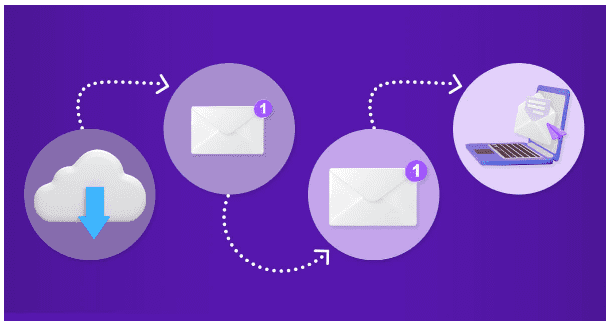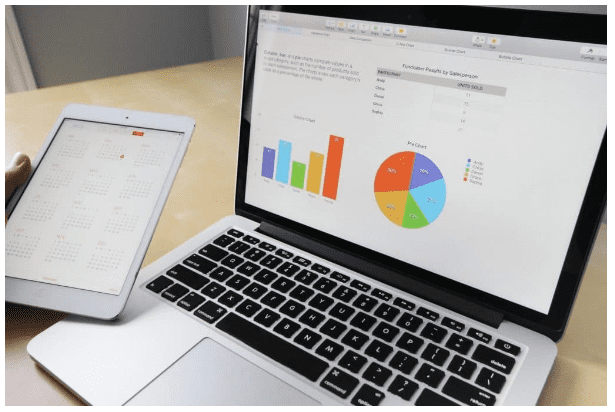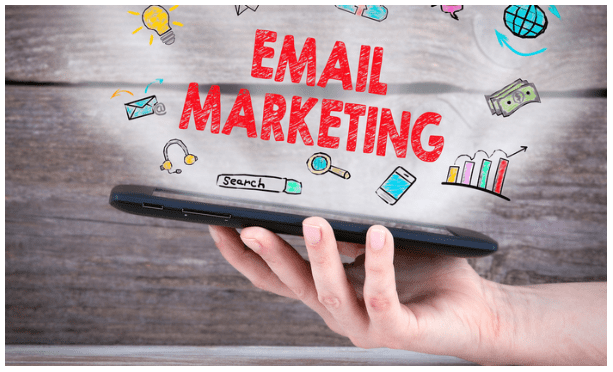Table of Contents
ToggleCrafting an Effective Email Nurture Sequence for Business Success
Crafting an effective email nurture sequence is crucial for driving business success. You can build strong relationships, increase conversions, and maximize revenue by strategically engaging and nurturing leads through targeted emails. Let’s explore the key elements when creating an impactful email nurture sequence.
- Segment your audience: Segment your leads based on their interests, demographics, or behavior. This allows you to tailor your email content to their needs and preferences, boosting engagement and relevance.
- Set clear objectives: Define the goals of your nurture sequence. Is it to educate, build trust, or promote specific products/services? Having clear objectives helps you create focused and purposeful content.
- Provide value: Deliver informative and valuable content that addresses your leads’ pain points. Offer industry insights, tips, case studies, or relevant statistics. You establish yourself as a trusted authority by demonstrating expertise and helping them overcome challenges.
- Personalize your emails: Use dynamic personalization to address each lead by name and customize the content based on their previous interactions or preferences. Personalization enhances the user experience and boosts engagement rates.
- Include compelling CTAs: Guide your leads towards the desired actions with persuasive calls-to-action (CTAs). Whether downloading an e-book, signing up for a webinar, or requesting a demo, make your CTAs clear, action-oriented, and benefit-driven.
- Test and optimize: Continuously test and optimize your email nurture sequence to improve its performance. Analyze open rates, click-through rates, and conversion rates to identify areas for improvement and make data-driven adjustments.
Remember, an effective email nurture sequence is about selling and building relationships. Provide value, personalize your content, and guide your leads through their buyer’s journey. Doing so enhances engagement, fosters trust, and ultimately drives business success.
Understanding Email Nurture Sequences
Email nurture sequences are vital in cultivating relationships with leads and guiding them through the buyer’s journey. By understanding the key aspects of email nurture sequences, you can leverage this powerful tool to optimize conversions and drive business growth.
Firstly, email nurture sequences consist of automated emails strategically designed to engage and nurture leads over time. These sequences are triggered based on specific actions or time intervals, allowing you to deliver targeted content immediately.
Segmentation is crucial in email nurture sequences. You can tailor content that resonates with each segment by categorizing leads based on interests, behaviors, or demographics. This personalization increases relevance and boosts engagement.
A successful email nurture sequence delivers value at every stage. Educate leads about industry trends, share valuable resources, and provide solutions to their pain points. You build trust and establish credibility by positioning yourself as a helpful resource.
Calls-to-action (CTAs) are essential in email nurture sequences. Each email should have a clear CTA that directs leads to take the desired action, such as downloading an e-book, signing up for a webinar, or requesting a consultation. Compelling and persuasive CTAs drive conversions and move leads closer to making a purchase.
Monitoring and analyzing the performance of your email nurture sequence is crucial for optimization. Track metrics like open rates, click-through rates, and conversions to identify areas for improvement. Test different subject lines, content formats, or CTAs to refine your approach and maximize results.
Remember, email nurture sequences are not one-size-fits-all. Customize the frequency, length, and content based on your target audience and their buyer’s journey. Continuously iterate and refine your approach to provide your leads with an engaging and seamless experience. By understanding the fundamentals of email nurture sequences and implementing best practices, you can effectively nurture leads, build lasting relationships, and drive business success.

1.1 What is an Email Nurture Sequence?
An email nurture sequence is a series of automated emails designed to engage and build relationships with leads or prospects over time. It is a strategic approach to deliver relevant content to your audience based on their actions, interests, or stage in the buyer’s journey.
The sequence typically begins when a lead subscribes to your email list or takes a specific action on your website, such as downloading a resource or signing up for a webinar. Once triggered, the emails are sent out at predetermined intervals, providing a consistent stream of valuable and targeted information.
The primary purpose of an email nurture sequence is to guide leads through the sales funnel by providing them with relevant and personalized content. It helps educate leads, address their pain points, build trust, and ultimately move them closer to making a purchasing decision.
Each email in the nurture sequence serves a specific purpose, such as introducing your brand, showcasing product benefits, offering educational resources, or presenting testimonials. The content is carefully crafted to provide value and nurture a relationship with the recipient.
By automating the process, you can scale your efforts and ensure that leads receive timely and consistent communication. Email nurture sequences effectively convert leads into customers and can significantly impact your overall sales and marketing efforts.
To maximize the effectiveness of an email nurture sequence, it is essential to segment your audience, personalize the content, include compelling calls-to-action, and regularly analyze the performance to make data-driven optimizations.
An email nurture sequence is a strategic series of automated emails that aim to engage, educate, and nurture leads over time, guiding them toward becoming customers.
1.2 The Importance of Personalization and Segmentation
Personalization and segmentation are critical elements in the success of an email nurture sequence. Let’s explore why they are essential and how they contribute to driving engagement and conversions.
- Personalization: Personalizing your email content allows you to create a tailored experience for each recipient. Addressing them by name and incorporating relevant details or past interactions establishes a connection and makes the email feel more personalized.
Personalization goes beyond simply inserting a name; it involves delivering content that matches the recipient’s specific needs and interests. This could include recommending relevant products or services based on their previous purchases or browsing behavior. When emails are personalized, recipients are more likely to engage with the content, click on links, and take desired actions. It enhances the overall user experience and helps build trust and rapport with your audience. - Segmentation: Segmentation involves dividing your audience into groups based on shared characteristics or behaviors. By segmenting your leads, you can send targeted messages that resonate with each group’s unique needs and preferences. Segmentation allows you to deliver highly relevant and customized content to specific segments of your audience. For example, you might create pieces based on demographics, interests, purchase history, or engagement level.
By tailoring your content to each piece, you increase the likelihood of capturing their attention and addressing their pain points directly. This leads to higher engagement rates, improved click-through rates, and, ultimately, better conversion rates. Segmentation also enables you to implement a more sophisticated lead-nurturing strategy. You can design email sequences specifically crafted to guide through their individual buyer’s journey, ensuring that they receive the most relevant information at each stage.
Personalization and segmentation are vital for the success of your email nurture sequence. Personalization creates a personalized and engaging experience for recipients, fostering a sense of connection and trust. Segmentation allows you to deliver targeted content to specific audience segments, increasing relevance and improving overall campaign effectiveness. By combining personalization and segmentation, you can optimize engagement and conversions and, ultimately, drive business growth.

1.3 Establishing the Buyer's Journey
Establishing the buyer’s journey is crucial in creating an effective email nurture sequence. The buyer’s journey is the process that potential customers go through, from the initial awareness of a problem or need to the final purchase decision. Understanding and mapping out this journey allows you to deliver the right content at the right time, guiding leads toward conversion. Here’s how you can establish the buyer’s journey for your email nurture sequence:
- Awareness stage: In this stage, leads identify and acknowledge a problem or need they have. You aim to create awareness and provide educational content that helps them understand their challenges. Emails at this stage should focus on informative blog posts, guides, or industry insights that capture their attention and establish your credibility.
- Consideration stage: Leads in the consideration stage actively research and evaluate possible solutions to their problem. You aim to position your product or service as a viable option. Send emails highlighting the unique benefits, features, and case studies demonstrating how your offering can address their needs effectively.
- Decision stage: At this stage, leads are ready to purchase. Your objective is to provide the necessary information and incentives to encourage them to choose your product or service over competitors. Offer exclusive discounts, demos, free trials, or customer testimonials that instill confidence and remove any remaining barriers to purchase.
By understanding the buyer’s journey, you can create a well-structured email nurture sequence that aligns with the needs and motivations of your leads at each stage. Tailor the content and messaging to address their pain points, answer their questions, and guide them toward a favorable decision.
Remember to track and analyze the engagement and conversion rates at each stage of the buyer’s journey. This data will help refine your email nurture sequence over time, ensuring continuous improvement and increased effectiveness in converting leads into customers.
Establishing the buyer’s journey is fundamental in crafting a successful email nurture sequence that effectively moves leads through the sales funnel, driving engagement and boosting conversions.
Crafting an Effective Email Nurture Sequence
Crafting an effective email nurture sequence requires careful planning and consideration. Here are some critical steps to follow to create a compelling and engaging email nurture sequence:
- Define your goals: Identify the objectives of your email nurture sequence. Is it to educate, build trust, promote specific products/services, or drive conversions? Understanding your goals will help shape the content and structure of your emails.
- Segment your audience: Divide your leads into segments based on interests, demographics, or behavior. This allows you to create personalized, targeted content that resonates with each piece. Customizing your messages increases relevance and engagement.
- Map out the sequence: Create a logical flow for your emails. Consider the number of emails in the line and the timing between them. Start with a welcome email to introduce your brand, followed by emails that progressively deliver value, address pain points, and guide leads toward a conversion.
- Provide valuable content: Each email should offer something of value to the recipient. Share informative blog posts, industry insights, or exclusive resources. Consider using storytelling techniques or case studies to engage and inspire your leads. The content should be educational, helpful, and relevant to their needs.
- Use compelling subject lines: Grab attention with attention-grabbing subject lines. A well-crafted subject line increases the chances of your email being opened. Incorporate personalization, urgency, or curiosity to entice recipients to click and explore the content.
- Include clear and persuasive CTAs: Every email should have a clear call-to-action (CTA) that prompts the recipient to take the desired action. Use action-oriented language and highlight the benefits of clicking the CTA. Make it easy for leads to navigate to your landing pages or selected conversion points.
- Test and optimize: Continuously analyze the performance of your email nurture sequence. Monitor open rates, click-through rates, and conversions. A/B tests subject lines, content formats, CTAs, and send times. Use the insights gained to optimize and refine your sequence for better results.
Remember to keep your emails concise, visually appealing, and mobile-friendly. Also, ensure compliance with email marketing regulations and respect recipients’ privacy preferences. By following these steps, you can craft an effective email nurture sequence that engages your leads, builds trust, and drives them towards conversion, ultimately contributing to your business success.

2.1 Setting Clear Goals and Objectives
Setting clear goals and objectives is essential for the success of your email nurture sequence. Clearly defining what you want to achieve with your campaign allows you to align your efforts, measure results, and make data-driven optimizations. Here are critical steps to setting clear goals and objectives for your email nurture sequence:
- Define the purpose: Determine the overarching goal of your email nurture sequence. Is it to nurture leads, increase conversions, promote a specific product or service, or build brand awareness? Understanding the primary purpose will guide your content and messaging decisions.
- Identify measurable goals: Establish specific, measurable, achievable, relevant, and time-bound (SMART) goals for your email nurture sequence. For example, your goals include increasing open, click-through, conversion, or lead-to-customer conversion rates. Make sure your goals align with your overall marketing and business objectives.
- Segment goals by stages: Break down your goals by the different stages of the buyer’s journey. For example, you might set goals for awareness-stage engagement, consideration-stage conversions, or retention and upsell opportunities. This helps you track progress and optimize the sequence for each stage.
- Set performance metrics: Determine the key performance indicators (KPIs) that align with your goals. These could include open rates, click-through rates, conversion rates, unsubscribe rates, or revenue generated. Assign specific targets to each metric to measure success.
- Track and analyze data: Implement robust tracking and analytics tools to monitor the performance of your email nurture sequence. Regularly review and analyze the data to gain insights into what works and needs improvement. Adjust your goals and strategies based on the data to optimize performance.
- Iterate and optimize: Use the insights from data analysis to make iterative improvements to your email nurture sequence. Test different subject lines, email formats, CTAs, or content types to optimize engagement and conversion rates. Continuously refine your approach based on the results you achieve.
Remember to document your goals and regularly review progress. Be flexible and willing to adapt your strategies based on the data and feedback you receive. Clear goals and objectives provide focus and direction, helping you create a more effective and impactful email nurture sequence that aligns with your overall business objectives.
2.2 Welcome Email: Building a Strong First Impression
The welcome email lets you make a solid first impression and establish a positive relationship with your new subscribers. It sets the tone for your email nurture sequence and can significantly impact engagement and conversions. Here are some key elements to consider when crafting a compelling welcome email:
- Personalization: Begin by addressing the recipient by name and expressing gratitude for their subscription. Personalization creates a sense of connection and shows that you value their presence. Consider using dynamic content to tailor the email based on your information about the subscriber.
- Introduction and Brand Story: Introduce your brand and provide a brief overview of who you are, what you do, and what sets you apart. Share your brand’s story, values, and mission. This helps build trust and establishes your credibility from the start.
- Value Proposition: Communicate the value your subscribers can expect to receive by being a part of your email list. Highlight the benefits, exclusive content, or resources they will gain access to. Emphasize how your emails will help them solve their problems or achieve their goals.
- Set Expectations: Tell subscribers what they can expect from your email nurture sequence. Inform them about the frequency of emails, the type of content they will receive, and any other relevant details. Transparency helps manage expectations and reduces the likelihood of unsubscribes.
- Call-to-Action (CTA): Include a clear and compelling CTA that encourages subscribers to take the next step. This could be directing them to explore your website, download a free resource, or follow you on social media. Make the CTA visually prominent and explain the value or benefit they will receive by taking action.
- Contact Information and Support: Provide your contact information and assure subscribers that you can address any questions or concerns. Offering excellent customer support from the beginning enhances trust and encourages engagement.
- Mobile Optimization: Ensure your welcome email is mobile-friendly and displays well on different devices. Many subscribers access their emails on mobile devices, and a seamless experience contributes to higher engagement rates.
- Warm and Friendly Tone: Infuse your welcome email with a warm and friendly tone to create a positive impression. Use conversational language and express enthusiasm for the subscriber joining your community.
Remember to optimize engagement by testing different elements of your welcome email, such as subject lines, CTAs, or content format. Monitor open and click-through rates to assess the effectiveness of your welcome email. Creating a well-crafted welcome email can captivate new subscribers, establish a strong foundation for your email nurture sequence, and increase the likelihood of continued engagement and conversions.

2.3 Educational and Informative Content
Including educational and informative content in your email nurture sequence is crucial in engaging your leads, building trust, and positioning yourself as a valuable resource. Here are some strategies to effectively incorporate educational content:
- Understand your audience: Research and analyze your target audience to identify their pain points, challenges, and areas of interest. This understanding will help you tailor educational content that directly addresses their needs.
- Provide valuable insights: Share industry insights, trends, and relevant statistics that educate your leads. Present information that adds value and helps them make informed decisions. Demonstrate your expertise and establish credibility by providing accurate and up-to-date information.
- Offer tutorials and guides: Create step-by-step or comprehensive guides that help your leads overcome specific challenges or achieve their goals. Break down complex topics into digestible chunks and provide actionable advice they can implement.
- Case studies and success stories: Share real-life examples and case studies that illustrate how your product or service has helped others solve problems or achieve positive outcomes. Concrete examples resonate with leads and help them see the potential benefits of working with you.
- Webinars and video content: Host educational webinars or create content that dives deeper into topics of interest. Video is a highly engaging medium that allows you to deliver information in a visually compelling and easily consumable format.
- Infographics and visual content: Utilize infographics or visual content to present data, processes, or concepts in a visually appealing and easily understandable manner. Visuals can enhance comprehension and make your content more memorable.
- Frequently Asked Questions (FAQs): Anticipate your leads’ common questions and concerns and address them in your emails. Include an FAQ section providing clear and concise answers, helping your tips overcome doubts or objections.
- Interactive content: Incorporate interactive elements like quizzes, assessments, or surveys to engage your leads and encourage active participation. Interactive content educates and allows you to gather valuable insights about your audience.
Remember to regularly analyze the performance of your educational content by monitoring engagement metrics, such as click-through rates and time spent on the page. Adjust your content strategy based on the data to ensure ongoing relevance and effectiveness. By consistently providing educational and informative content, you position yourself as a trusted authority, nurture relationships with your leads, and increase the likelihood of conversions.
2.4 Personalized Offers and Promotions
Personalized offers and promotions are powerful tools to drive engagement, conversions, and customer loyalty within your email nurture sequence. By tailoring your offers to your leads’ specific needs and preferences, you can create a sense of exclusivity and increase the likelihood of conversion. Here are some strategies for incorporating personalized offers and promotions:
- Segment your audience: Use the data you have collected about your leads to segment them based on their demographics, interests, behavior, or purchase history. This segmentation allows you to create targeted offers that resonate with each group.
- Dynamic content: Utilize dynamic content within your emails to personalize the offers and promotions based on the specific characteristics of each lead. Incorporate their name, location, or previous interactions to make the offer more relevant and tailored to their needs.
- Behavioral triggers: Set up behavioral triggers within your email nurture sequence that automatically send personalized offers based on specific actions or engagement. For example, if a lead has shown interest in a particular product, send them a customized request related to that product.
- Exclusive discounts and promotions: Provide your leads with exclusive deals or promotions unavailable to the general public. This creates a sense of exclusivity and incentivizes them to take advantage of the offer.
- Upselling and cross-selling: Identify opportunities to upsell or cross-sell related products or services based on the lead’s previous purchases or browsing behavior. Recommend complementary items or upgrades that enhance their overall experience.
- Limited-time offers: Create a sense of urgency by incorporating limited-time offers or promotions. Highlight the expiration date or the limited quantity available to encourage leads to take immediate action.
- Personalized recommendations: Use data-driven algorithms or customer profiling to provide customized product recommendations based on the lead’s preferences and browsing history. Show them how the recommended products or services align with their interests or needs.
- Loyalty programs: Reward your loyal customers with exclusive offers, discounts, or points-based loyalty programs. This encourages repeat purchases and fosters a sense of appreciation and loyalty.
Remember to track the performance of your personalized offers and promotions by analyzing metrics such as click-through rates, conversion rates, and revenue generated. Use this data to refine and optimize your requests over time.
By delivering personalized offers and promotions, you demonstrate that you understand and value your leads, increasing the likelihood of conversion and fostering long-term customer relationships.

Final Thoughts
Crafting an effective email nurture sequence requires careful planning, personalization, and a focus on delivering valuable content to your leads. By setting clear goals and objectives, building a solid first impression with your welcome email, providing educational and informative content, and incorporating personalized offers and promotions, you can engage your audience, build trust, and drive conversions.
Remember to continuously analyze and optimize your email nurture sequence based on data and feedback. Test different elements, monitor performance metrics, and iterate to improve engagement and click-through rates and ultimately achieve your conversion goals.
Building solid relationships with your leads through a well-crafted email nurture sequence is a powerful way to drive business success. By providing value, addressing pain points, and guiding leaders through their buyer’s journey, you can nurture them into loyal customers who actively engage with your brand.
- Success vs. Significance: Understanding the Difference and Achieving Both - October 1, 2023
- 8 Steps to SaaS Success: From Idea to Business - September 30, 2023
- The Importance of Testing in SaaS: Ensure Quality and Success - September 29, 2023